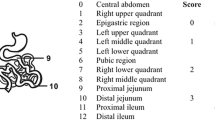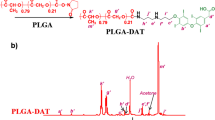Abstract
A novel therapy for improving selectivity in cancer chemotherapy aims to modify distribution of a cytotoxic drug by generating it selectively at tumour sites. In this approach an antibody-enzyme conjugate is allowed to localise at the tumour sites before injecting a prodrug which is converted to an active drug specifically by the targeted enzyme in the conjugate. We present here pharmacokinetic studies on the prodrug 4-(bis (2-chloroethyl) amino) benzoyl-L-glutamic acid and its activated derivative, benzoic acid mustard. The glutamic acid is cleaved from the prodrug to form the active drug by carboxypeptidase G2 (CPG2), an enzyme from Pseudomonas sp., which is not found in mammalian cells. The prodrug and its parent active drug were rapidly distributed in plasma and tissues after administration of prodrug or active drug (41 mumol kg-1 intraperitoneally) to mice bearing human choriocarcinoma xenografts. Prodrug and active drug both followed a two-compartment kinetic model. Prodrug was eliminated more rapidly (t1/2 alpha = 0.12 h, t1/2 beta = 0.70 h) than active drug (t1/2 alpha = 0.37 h, t1/2 beta = 1.61 h). Conversion of the prodrug to the activated parent drug was detected within 5 min of administration to mice which had previously received a F(ab')2-anti-human chorionic gonadotrophin antibody (W14A) conjugated to the enzyme, CPG2 (1,000 U kg-1). Tumour was the only tissue that activated all the prodrug reaching the site. It contained the highest concentration of targeted enzyme conjugate capable of catalysing the reaction of prodrug to drug. Plasma and other tissues were also capable of activating the prodrug but active drug production was limited by the amount of enzyme present. The active drug measured in plasma and tissues other than tumour was attributable to residual antibody-enzyme conjugate at non-tumour sites. Low levels of conjugate in tissues and plasma militate against the advantage of tumour localised enzyme therefore necessitating removal of non-localised enzyme.
This is a preview of subscription content, access via your institution
Access options
Subscribe to this journal
Receive 24 print issues and online access
$259.00 per year
only $10.79 per issue
Buy this article
- Purchase on Springer Link
- Instant access to full article PDF
Prices may be subject to local taxes which are calculated during checkout
Similar content being viewed by others
Author information
Authors and Affiliations
Rights and permissions
About this article
Cite this article
Antoniw, P., Springer, C., Bagshawe, K. et al. Disposition of the prodrug 4-(bis (2-chloroethyl) amino) benzoyl-L-glutamic acid and its active parent drug in mice. Br J Cancer 62, 909–914 (1990). https://doi.org/10.1038/bjc.1990.407
Issue Date:
DOI: https://doi.org/10.1038/bjc.1990.407
This article is cited by
-
Antibody-Directed Enzyme Prodrug Therapy
Clinical Immunotherapeutics (1995)
-
Analysis of antibody-enzyme conjugate clearance by investigation of prodrug and active drug in an ADEPT clinical study
Cell Biophysics (1994)
-
Identification of prodrug, active drug, and metabolites in an ADEPT clinical study
Cell Biophysics (1993)



